When we are in the garden, we will inadvertently be attracted by the beautiful landscape, scenery, flowers, bridges, and ponds. However, very often, the photos that we took turns out dismay due to bad composition and blur images. In reality is, garden photography is more than point-and-shoot.
This article discusses some simple technique that everyone can master, which nearly guarantees excellent results. The following photos taken in the garden illustrates some of the techniques I used, which heighten the beauty of the multicolor and diverse objects present in the garden.
1. Using the line to lead the eye in
Ther are many objects which act as lines to lead the eye to the point of interest in the photo.
Framing your image so that a pathway in a garden leads and invites the viewer’s eye into the subject can be powerful. In this photo, the bridge railing act as the leading line to bring our attention to the gentleman jogging in the garden.

An early-morning walk is a blessing for the whole day. Walking in the gardens, enjoy the universal element of nature, fresh air, birds chirping, then sipping a cup of coffee, enjoy the rewards of the simple life.
2. Images with foreground and background
In this image, I include some flowers at the foreground, garden parasol, and chairs at the mid-ground, trees and swimming pool at the background.
This method is extensively used in landscape photography, which creates a sense of depth to the two-dimensional photo.

Taking advantage of the flower on the left foreground, the row of well-trimmed trees in the middle, and the distance building as the background to build up the depth of the image.
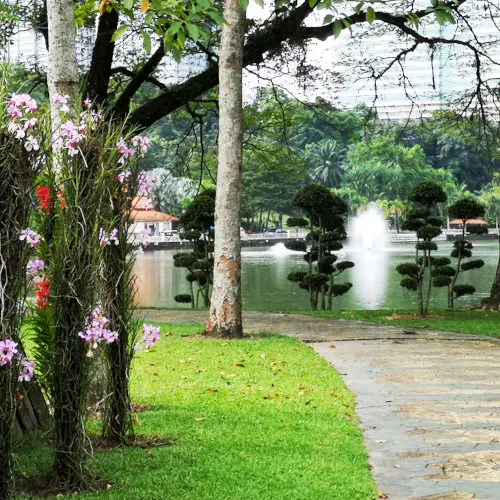
3. Freeze the water movement
Fountains and ponds in the garden are superb for photography because of the water movement and reflection.
There are two ways to capture the essence of water - either accentuate or freeze the movement.
The following image was taken in China last year under bright light. The water sprayed from the fish mouth, and on the pond was frozen with high shutter speed to show the water droplets and the clear reflection.
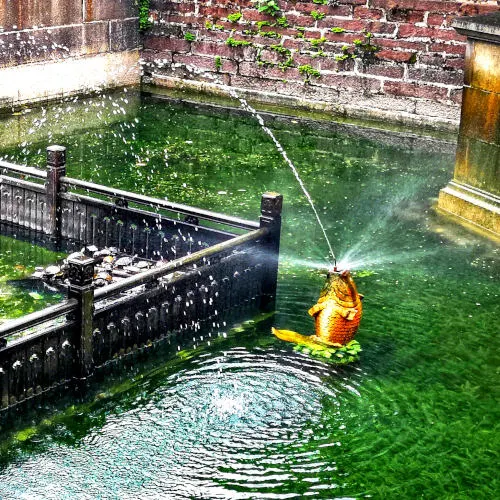
4. Show the water movement
This image was taken with a slow shutter speed to show the movement of the water. However, there is a challenge to use a slow shutter speed under bright light as it tends to overexposed. The solution for DSLR is to add an ND filter to reduce the amount of light record by the camera sensor.
Fortunately, taking such images is more straightforward with mobile phones. Many high-quality mobile phones have the 'silky water' or 'waterfall' mode in the camera app. This mode mimics the ND filter effect with a programmatic algorithm that can register the correct amount of light by the camera.

Shutter speed 16s: crop and a bunch of enhancement with Snapseed.
Shutter speed 16s: crop and a bunch of enhancement with Snapseed.
5. Pavement
A major part of garden photography is about the scenery. Sky, trees, pavement, pond, flowers - all the elements of the garden in one picture. There are layers of objects: foreground, mid-ground, and background. The leading line of the pavement, bend to the right loosely follow the rule of thirds.
The sky is darkened by one f stop with Snapseed.
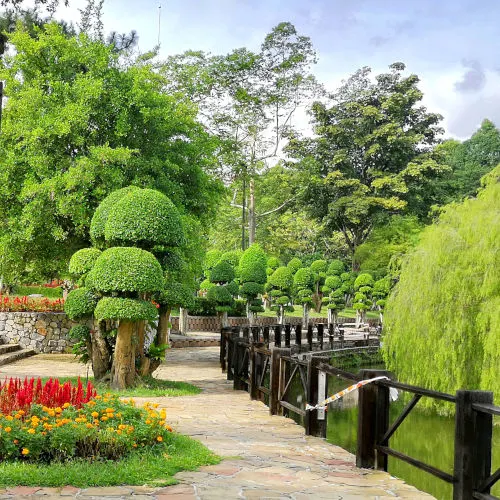
6. Close up for flowers
Flowers are the most common object in garden photography. This type of photos is eye-catching because most people do not pay close attention to the details.
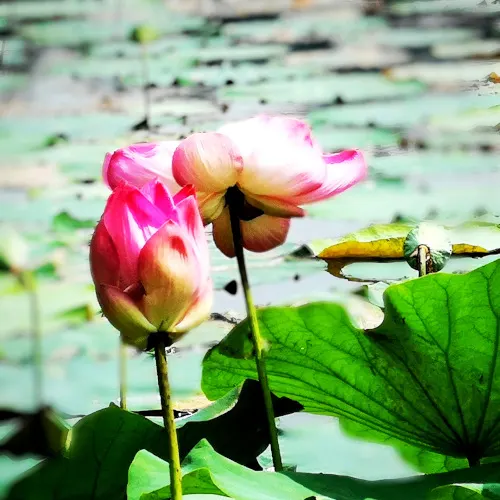
The photo was taken in the garden. The flower 🌸 is three meters from the edge of the pond, so I had to use the 5x zoom. That's the maximum zoom range I use for any 📱to minimize loss of details due to digital zoom.
Crop, resized, blur the background, brighten the lotus, all for the purposes to emphasize the beauty of the lotus flowers.
7. Bugs and insects
Another opportunity is to take note of some unique bug and insects, besides the beautiful butterflies. (They CAN look charming and attractive!)
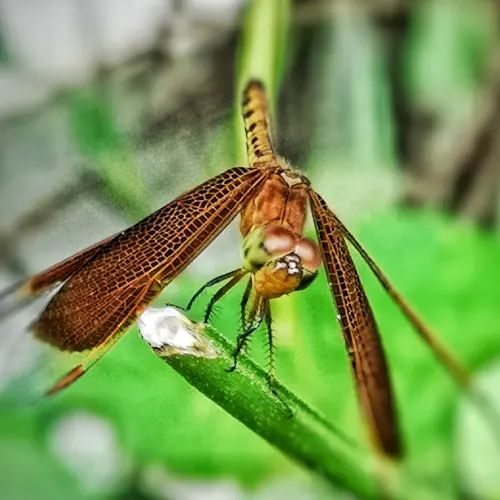
This little creature was spotted when I am strolling along the garden walkway.
The insect 🐛 was unfazed by my proximity, and let me took his handsome portrait leisurely. It seemed he knew that I was harmless.
Photography teaches me to be more alert to the surroundings and take note of the minute details that happen around us. I might have just walked by without pausing in the past.
Note: F1.8, processS1/50, use Snapseed to blur the background and lightened the insect.
Post-production with Snapseed, a simple camera app
You might notice that I am using Snapseed, a free mobile photo app to edit the photographs. Editing has become an essential technique in photography. It is especially vital n mobile phone photography. You can import your photo to the app without leaving your handphone, and directly share it to all the social media. Here is the article on how to do some basic editing with Snapseed that will improve the quality of your photo in less than one minute.
